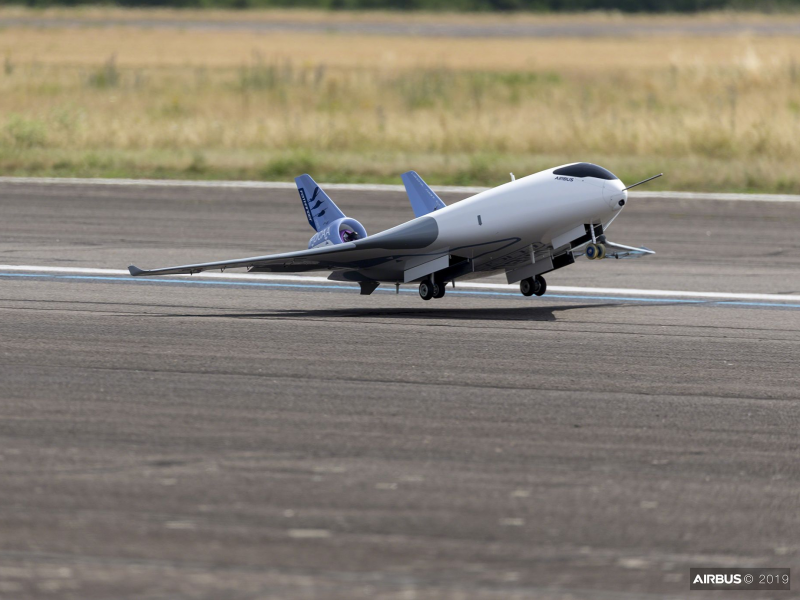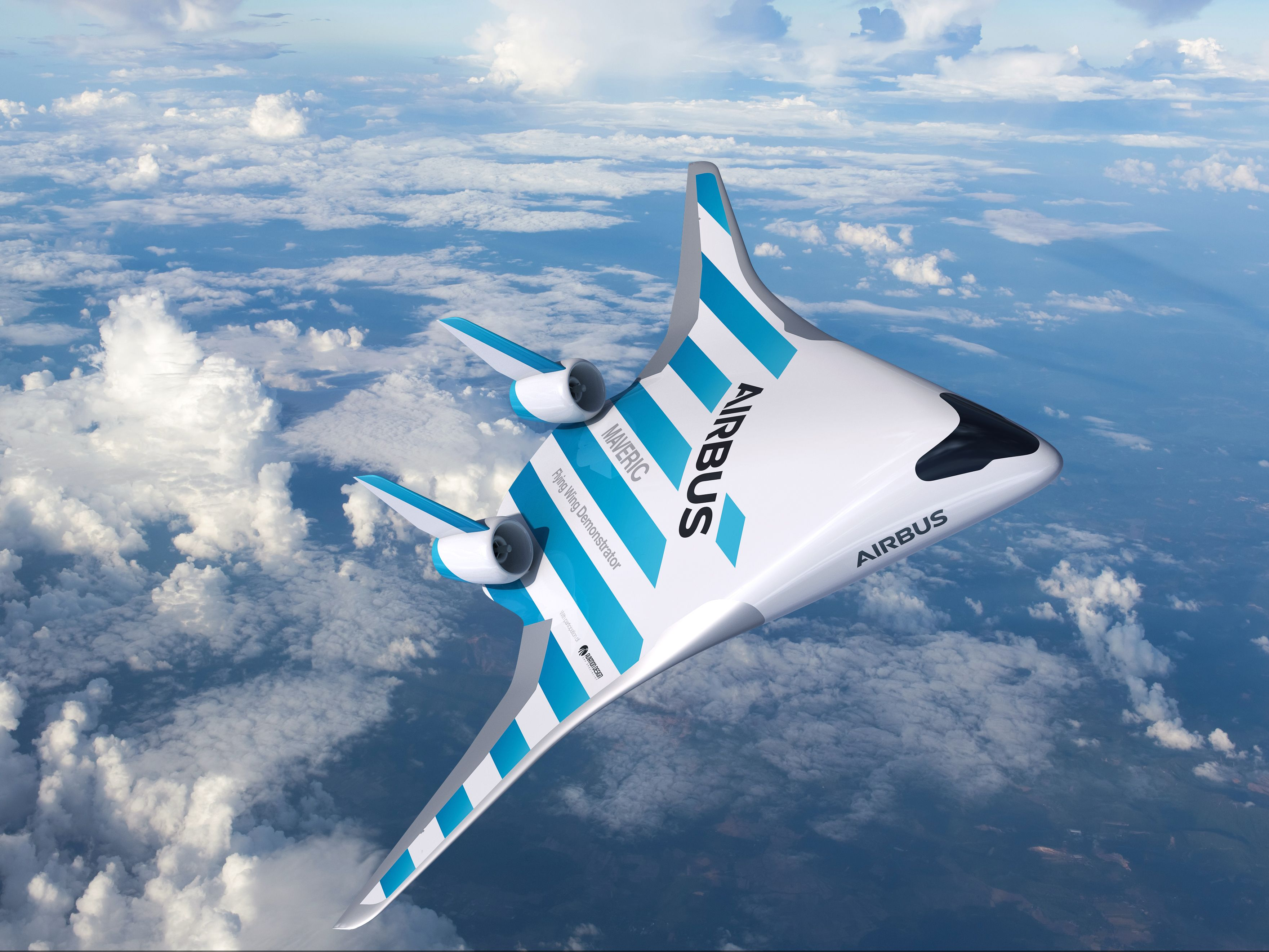- Airbus unveiled a concept for an aircraft design at the Singapore Airshow 2020 with a model test aircraft named Maveric.
- The new design features a blended-wing structure that largely merges the fuselage and wing to give the appearance of one large wing.
- Similar designs are in use in the military and have the potential to reduce fuel consumption, according to Airbus.
- Visit Business Insider’s homepage for more stories.
The European aircraft manufacturer Airbus has unveiled a model of what it believes may be the future of passenger-aircraft designs.
The Model Aircraft for Validation and Experimentation of Robust Innovate Controls, or Maveric, made its debut at the Singapore Airshow 2020 on Tuesday. The new aircraft design seeks to upend the long-standing tradition of tube-shaped aircraft fuselages.
The model reflects what a “blended-wing” design, a concept used mainly in military aircraft, would look like for commercial planes.
Maveric is in the initial stages of development. Airbus quietly launched the project in 2017 and began tests on a small remote-controlled model in 2019.
Though it looks like something out of a science-fiction movie, aircraft with designs like the Maveric may become a reality if Airbus, one of the largest commercial-aircraft manufacturers, has its way.
Take a look at what may be the aircraft design of the future.
Maveric employs a blended-wing concept, which merges the fuselage and wing of the plane, giving the appearance of a flying giant wing.
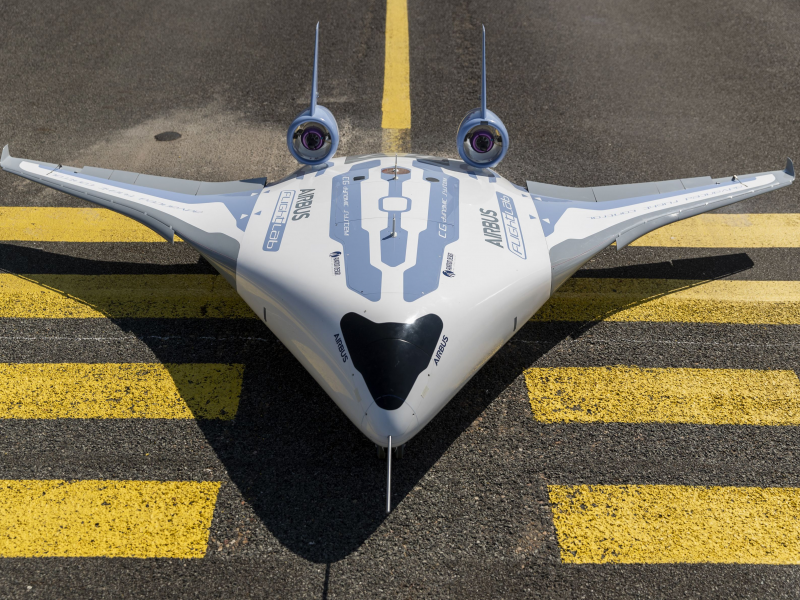
Instead of the engines being mounted under the wings of the aircraft, they would be attached to vertical stabilizers in the rear and on top of the aircraft.
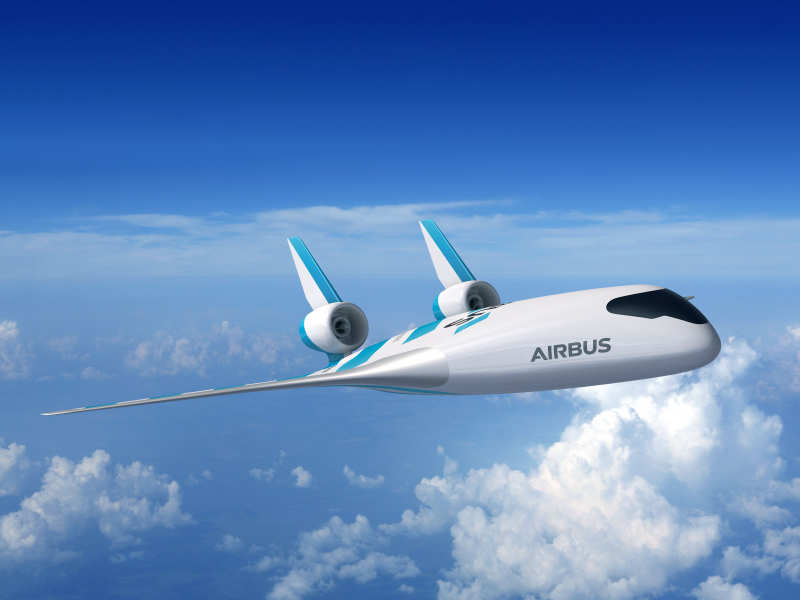
According to Airbus, the design would have the potential to lower fuel consumption by 20% compared with other aircraft designs, with the blended wing likely allowing for smoother airflow over the aircraft.
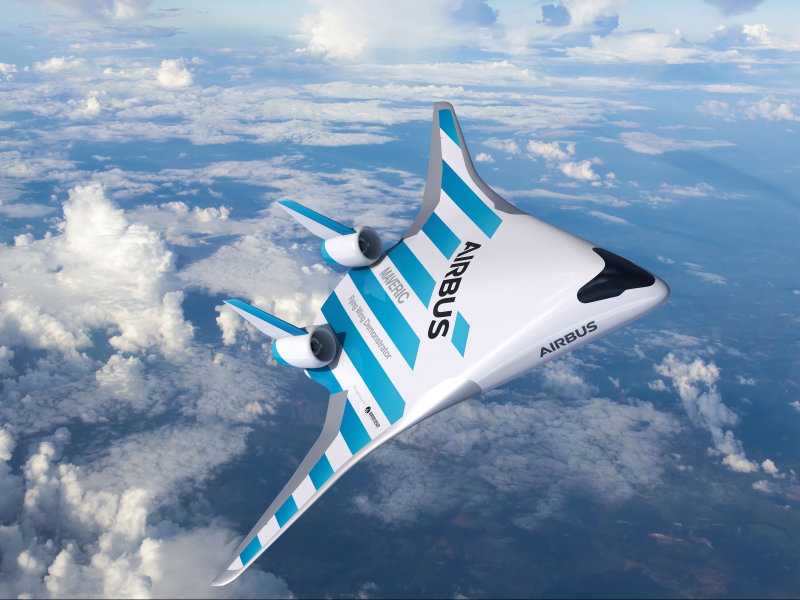
Blended-wing designs differ from conventional wide-body aircraft designs that have distinct wings and fuselages and underwing engines.
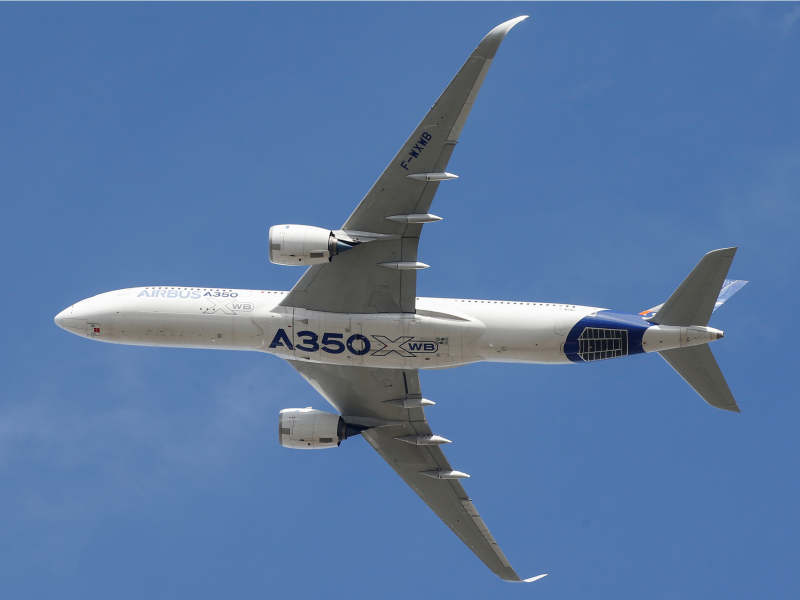
A similar aircraft design, the B-2 Spirit stealth-bomber aircraft, is in use in the US military.
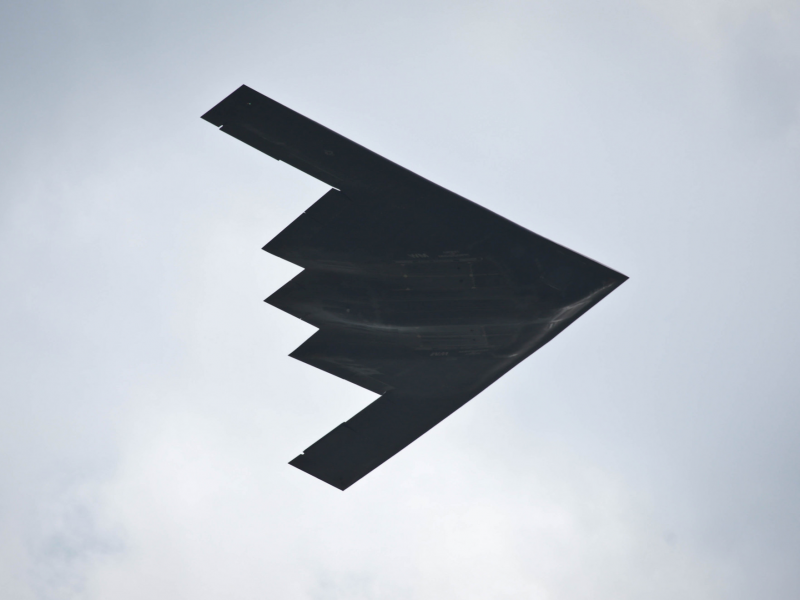
Airbus also showed what the cabin of such an aircraft would look like, offering the idea that a blended-wing design would allow for redesigned cabins.
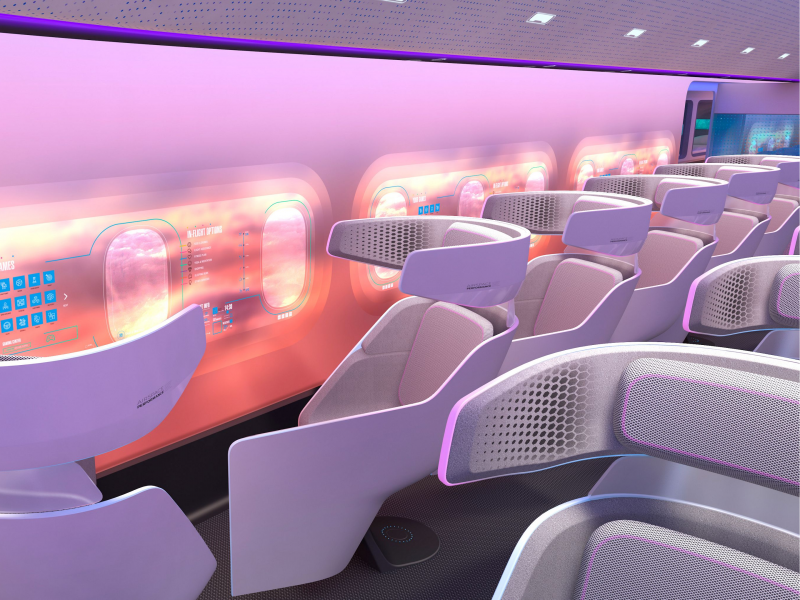
The blended-wing design would make the aircraft wide instead of long, potentially forcing cabin areas to be set side by side instead of back to back.
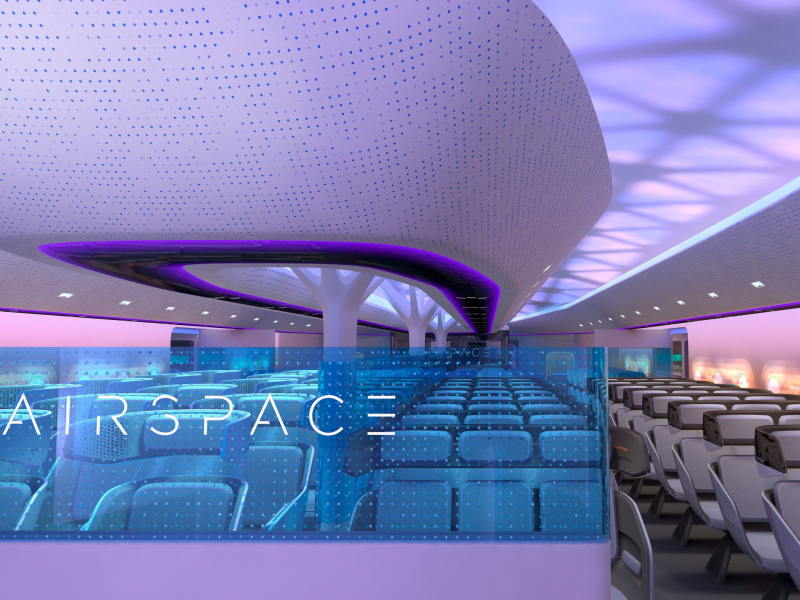
A wider aircraft could also allow for a more open concept on board and make the cabin feel less congested compared with current-generation aircraft designs.
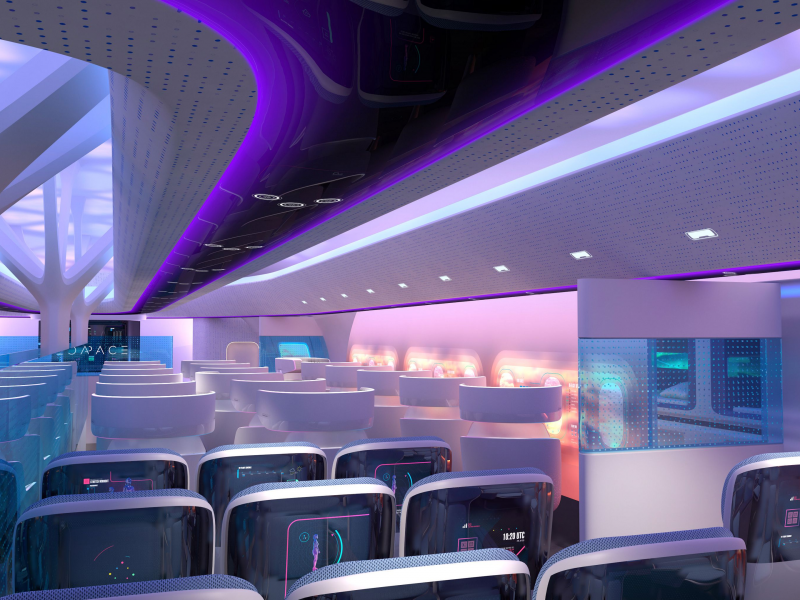
Airbus has been one of the leaders in the charge for redesigned aircraft cabins under its Airspace by Airbus program, with its ideas including a "Connected Cabin" that uses technology to make more efficient use of existing cabin amenities, such as overhead bins and service trolleys.
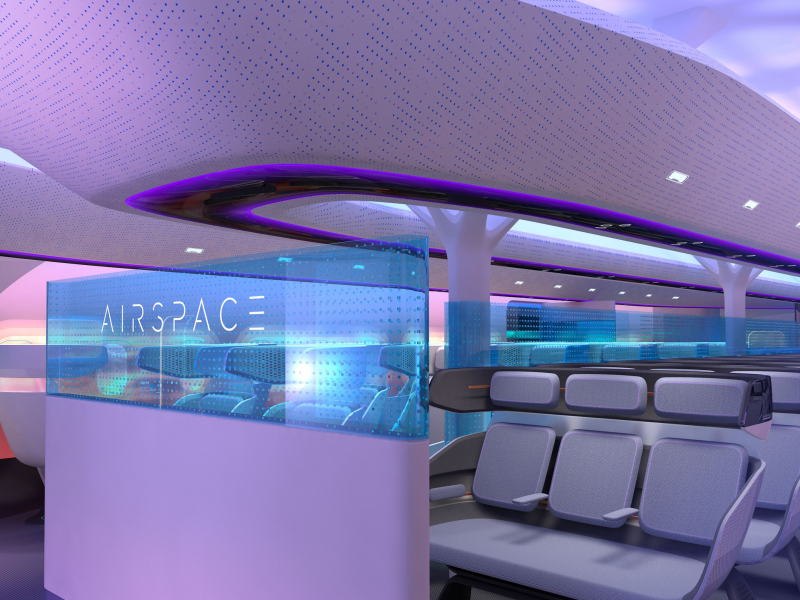
Source: Airbus
For now, the most that the program has produced is a 3.2-meter-wide remote-controlled model aircraft that Airbus has been testing for the past year to determine the program's viability.
